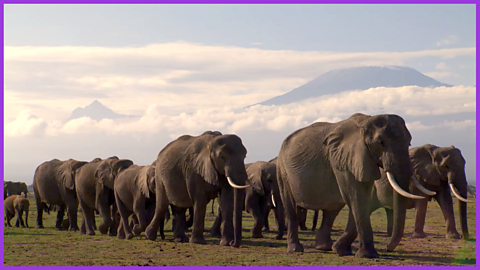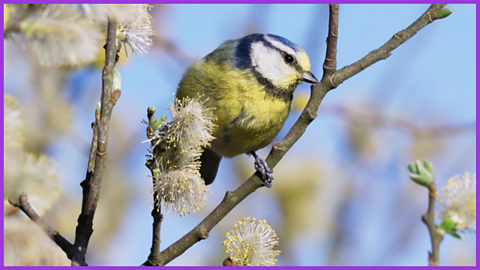Three videos exploring and contrasting the six major biomes of Earth: rainforests, deserts, savannahs, tundras, woodlands and grasslands.
The videos
Biomes: Rainforests and Deserts. video
Join the mission to investigate the climate, plants and animals of two of Earth's major biomes: rainforests and deserts.

Biomes: Savannahs and Tundras. video
Join the mission to investigate the climate, plants and animals of two of Earth's major biomes: savannahs and tundras.

Biomes: Woodlands and Grasslands. video
Join the mission to investigate the climate, plants and animals of two of Earth's major biomes: woodlands and grasslands.

Biomes
Pupils join EVA ('Earth's Virtual Assistant') to discover the climate, plants and animals that characterise six of Earth's major biomes: rainforests, deserts, savannahs, tundras, woodlands and grasslands.
In Rainforests and Deserts pupils will discover:
- the layers that make up the rainforest from the floor, to canopy and emergent layer
- that rainforests are rich in biodiversity
- how animals - like spider monkeys - have adapted to live in this biome
- that deserts can be both hot and cold
- that it is lack of rainfall that characterises the desert biome
- that animals need special adaptations to survive the extreme temperatures of the desert biome.
In Savannahs and Tundras pupils will discover:
- that savannahs are rich in biodiversity and have two seasons - wet and dry
- how plants - such as the baobab tree - have adapted to survive the irregular rainfall
- how savannahs are one of the last places on Earth to witness a mass migration of animals
- that tundras are very cold and consequently are low in biodiversity
- how some animals - such as the Arctic fox - have adapted to survive the cold temperatures and permafrost
- how the Earth's warming due to climate change is threatening the tundra biome.
In Woodlands and Grasslands pupils will discover:
- that woodlands have four distinct seasons
- that the woodland biome is characterised by trees, which can be both deciduous (shedding leaves in the winter) and coniferous (evergreen)
- that the climate of woodlands is temperate, and that consequently this biome is rich in biodiversity
- that grasslands are characterised by flat plains
- that animals - such as the saiga antelope - have adapted to survive the extremes of temperature the grassland biome can experience
- that the Earth's warming due to climate change is threatening this biome with desertification.
Curriculum notes
These videos are suitable for teaching KS2 in England and Northern Ireland, 2nd Level in Scotland and Progression Step 3 in Wales. Specific curriculum links are detailed in the Teacher Notes which can be found on each episode page.
See also... Settlements. collection
Join EVA on another mission: to discover different types of settlement - including villages, towns and cities - and to investigate the factors determining land use.
